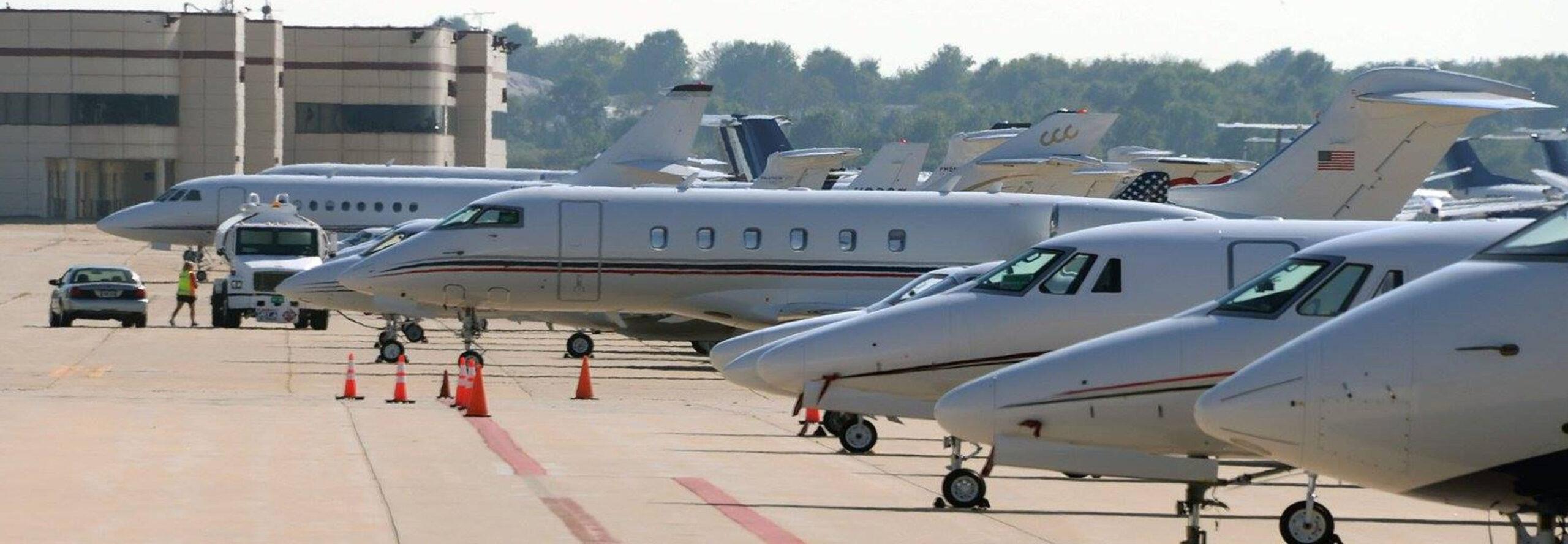Attracting and Keeping GA Traffic

Last week, I invited some pilots from around the United States to sit down with me and share their thoughts on their flight-to-flight difficulties for general aviation traffic. I got an overwhelming response, with many pilots echoing each other’s statements, be they frustration with fueling or praise for certain airports and FBOs’ practices.
As GA operations continue their uptick in the wake of Covid-19, airports and FBOs across the country can benefit from assessing their practices and supporting GA traffic, along with its accompanying revenue.
Signage for Self-service Fueling
One sentiment that was shared among the attendees was frustration with how hard it can be to locate self-service fuel pumps after a landing. “I spent over an hour trying to find the fuel pump KHII at night,” said one attendee, “only to finally find the pump hidden in the middle of some hangars.” Others agreed, noting that the growing practice of marking fuel pumps on the airport diagram has been a tremendous help in flight planning.
Restroom Availability
After a long flight, pilots may be desperate to use the facilities. At 24-hour FBOs, restroom availability is less of a concern, but for unattended airports, it can be hard to find an appropriate place to go to the bathroom, wash hands, and prepare for the next leg of their flight.
Transient parking and bathrooms near self-serve fueling would provide GA pilots on long trips a chance to catch their breath.
Informative Websites
When planning a trip, pilots rely on numerous sources: ForeFlight, Airnav, AOPA, and the website of the airport itself. Several attendees highlighted the importance of a basic pilot information page, with the local knowledge your tenants would be familiar with, but a transient aircraft might be unaware of. Information on noise abatement, common reporting points, the location of transient parking or run-up areas. One attendee commended the websites for Big Bear Airport (L35) and Cable Airport (CCB), giving a shout out to the whisper track noise abatement information on Big Bear’s website.
Enforcing Hangar Use
Hangars are in high demand, and with sometimes years-long waitlists, pilots are understandably eager to see airports enforce rules on hangar use. Storage of non-aircraft, or aircraft that are not operable and not in the process of being serviced puts pressure on pilots to store their aircraft outdoors, or far away from their preferred location.
Many leases require that the tenant have an aircraft stored at the airport. The aircraft should have current insurance and be in operable condition, or in the process of being repaired. Annual hangar inspections can help enforce this rule, but some GA pilots express frustration that standards are not always enforced, leaving a higher demand for enclosed aircraft storage space than airports can supply.
Community Engagement
When I started the session with the GA pilots, I expected the focus to be on how airports and pilots communicate, but a surprising number of pilots brought up the importance of community engagement.
“Bring your neighbors inside your tent, helping them understand the value that an airport [and its] associated business and services hold for the local community,” said one attendee.
Suburban expansion threatens many smaller airports, like Santa Monica (SMO) and East Hampton (HTO), with closure, increased noise complaints, and clashes with local organizations. Staying active in local and state community planning can head off trouble before it arrives. Events, like Young Eagles’ flight days to involve kids and teens in local aviation, or Indy South Greenwood Airport’s community day can bring the local community in as well. Following up on these fun events with roundtables, discussions, and demonstrations of the business opportunities brought by airports is key to minimizing conflict with local communities.
Nurturing Relationships
Not every change mentioned here can be, or even should be, implemented at every airport with GA traffic. However, pilots note that the exciting world of general aviation is enhanced by positive relationships between the airports, FBOs, and the transient and local pilots that use the airport. Attendees cited the great service at Del Monte Aviation in Monterey and the friendliness of the team at Murray Field in Eureka as reasons they love to fly there.
GA pilots depend on airports for services, access to interesting locations, and aircraft storage. The pilots expressed that they want airports to thrive. Bringing in more GA traffic, developing a strong relationship with the local community, and engaging with pilots from all walks of life can only benefit airports across the U.S. in the coming years.
About The Author
Claire Korzekwa is a product manager with RevJet360, a provider of Cloud-Based Airport Revenue and Vendor Management software, including lease management, access control, and airport permitting. Thank you to the GA community and all those who attended the conversation, both during the live event and asynchronously.
